Before there was the spring of 1994, there was 1991-92.
The New York Rangers’ rise to Stanley Cup-drought busters didn’t happen overnight. For hopeful fans at the outset of the 1990s, however, it might have seemed that way for one season.
That wasn’t the long-awaited 1993-94 championship campaign; instead, it was that ’91-’92 Blueshirts squad that, while failing to win it all, laid the template and developed the confident mindset for the Rangers to capture their first Cup in 54 years two seasons later.
Even the most hopelessly optimistic Rangers fan had to be stunned by what occurred that season: Mark Messier had arrived in a trade with the Edmonton Oilers one game into the season, and immediately set about lifting the Blueshirts into rarefied air. That Rangers club delivered the first 50-win season in franchise history, and first 100-point season since 1972-73.
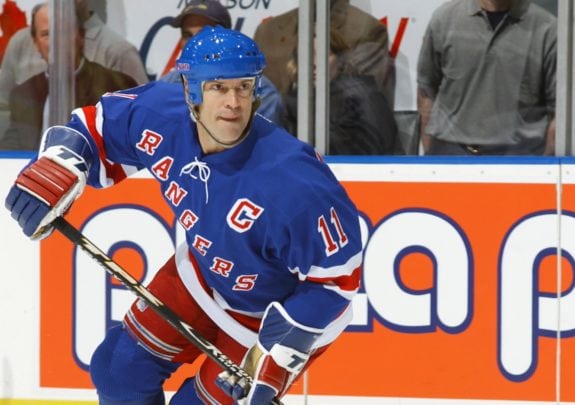
Messier’s effect was greater than anyone could have imagined. Leading by example with a team-high 107 points, his presence set the stage for the Norris Trophy-winning effort of rising cornerstone Brian Leetch (career-best 102 points) and spectacular debuts by rookie forwards Tony Amonte (35 goals, 34 assists) and Sergei Nemchinov (career-high 30 goals, 28 assists).
Related: The Day the Mark Messier Era Ended in New York
It was also the first season for a future standout center named Doug Weight, who recorded 30 points in 53 games before being traded to the Edmonton Oilers for forward Esa Tikkanen in a win-now deal the following season. Weight would go on to record 1,033 points in 1,238 games of a 19-year NHL career.
It wasn’t just the younger players who were buoyed by the rising tide of Messier’s presence, however. James Patrick totaled what proved to be a career-high 71 points, giving the Rangers an offensively lethal pair of mobile defensemen. Adam Graves, Messier’s former teammate with the Oilers, blossomed into a legitimate scoring power forward, delivering 26 goals to best his previous career-high by 17. Darren Turcotte continued the strong start to his career with 30 goals, while future Hall of Famer Mike Gartner turned in what was the second of three straight 40-goal seasons on Broadway.
Rangers’ Big Leap Had Them Eyeing Cup
It was head-spinning. Suddenly, the Rangers were fast, young, deep and experienced. They had a true leader, one with the championship pedigree to make fans believe that the Blueshirts might just be Cup contenders. With a 20-point improvement from 1990-91, having what looked like a legitimate shot at ending the drought took some getting used to for the long-suffering Rangers faithful.
What 1991-92 ultimately did was put the key championship pieces and team structure in place: Messier, Leetch, Graves and then-25-year-old goaltender Mike Richter were among the pillars of what transpired two seasons later, and Nemchinov also proved to be a key contributor on the title team. Amonte, Gartner, Patrick and Turcotte were used in critical trades that bulked up the roster for the ’94 playoff run, with Patrick and Turcotte being used to obtain Steve Larmer from the Hartford Whalers in November 1993, and Amonte and Gartner bringing back Stephane Matteau, Brian Noonan and Glenn Anderson before the 1994 trade deadline.
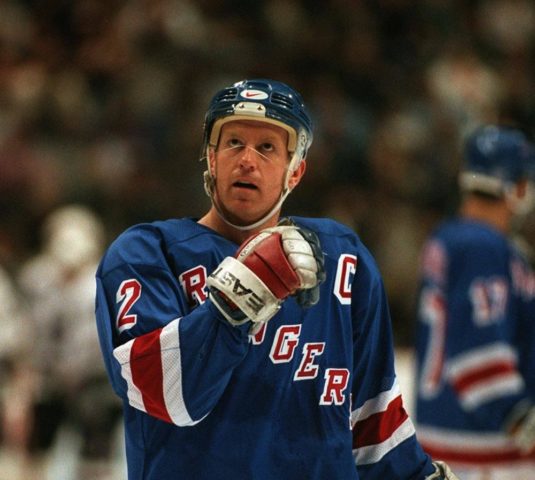
The 1991-92 Rangers led the NHL in wins, and with five 30-goal scorers, the Patrick Division champions ranked third in the league with 321 goals. The group holds a place among the most successful regular-season clubs in team history.
Related: 10 NHL Oddities We’ll Never See Again
So why aren’t they better remembered? The most obvious reason is what happened in 1993-94, perhaps the franchise’s greatest moment and still its most recent title. The ’91-’92 club is also further obscured by the mess of 1992-93, during which Leetch’s broken ankle and a feud between Messier and coach Roger Neilson led to Neilson’s firing and resulted in a tumultuous 34-39-11 season.
The biggest reason 1991-92 doesn’t register much today, though, is the way it ended.
After needing seven games to dispatch the underdog New Jersey Devils in the first round of the playoffs, the Rangers drew the high-powered Pittsburgh Penguins in the second round. The Blueshirts dropped the first game 4-2 before the seminal moment of the series occurred in Game 2 – one that’s still discussed today.
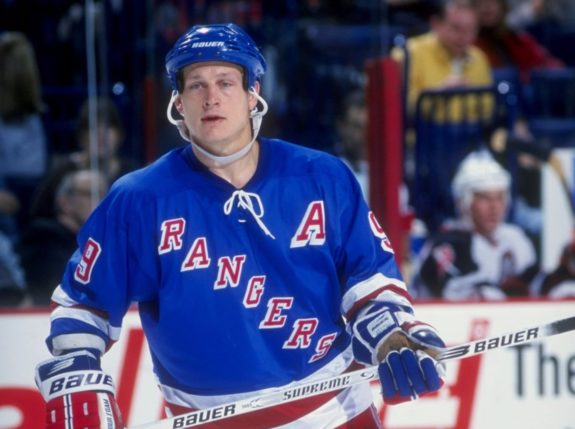
Graves’ slash of Penguins superstar Mario Lemieux early in the contest, a play wholly uncharacteristic of his long career, broke Lemieux’s left hand and knocked him out of the series. The Rangers would go on to win that contest 4-2 and also took Game 3 in overtime, with Graves, who was only assessed a minor penalty for the incident, opening the scoring in the third game.
The Rangers forward, though, was then suspended for four games, and Lemieux accused him of intentionally injuring him on orders from Neilson (From ‘Graves’ Slash was Definitely Premeditated, Says Lemieux’, The Deseret News, May 31, 1992). With the controversy swirling around the Rangers, the outraged Penguins used the incident as fuel and rallied to win the next three games. Lemieux returned for the Wales Conference Final and the Pens went on to capture their second straight Stanley Cup.
Disheartening Playoff Loss Set Stage for 1993-94
Perhaps that star-laded Pittsburgh team, led by Lemieux, Kevin Stevens, Ron Francis, Joe Mullen and second-year player Jaromir Jagr (who was SIXTH on the team with 69 points) would have come out on top anyways. Still, the under-siege Rangers were forced to contend with the added challenge of the distraction caused by the Graves-Lemieux flap.
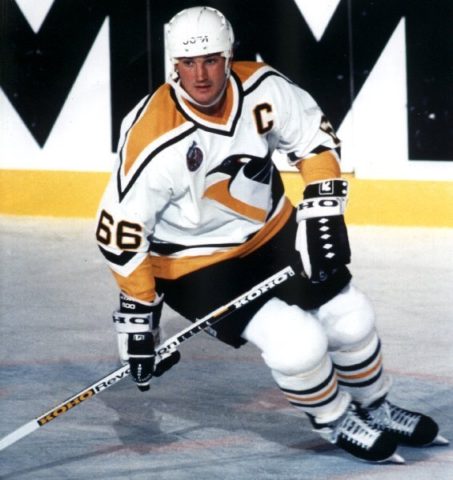
It’s impossible to say how much the controversy and Graves’ absence affected the upstart Blueshirts, who would have faced the Boston Bruins in the Conference Final and the Chicago Blackhawks in the Stanley Cup Final – both teams that had put together lesser regular seasons than the Rangers, and both of whom ended up being swept by the Penguins. What-might-have-beens are pointless, though they still provide great food for thought.
Related: The Best NHL Forwards Ever – A Lineup for the Ages
It’s not unreasonable to think the Rangers would have at least been able to make a serious run at the Stanley Cup had they gotten past Pittsburgh. Along with the wealth of offensive talent, they had grit in players like Jeff Beukeboom, Joey Kocur, Kris King, defensive-minded forwards Jan Erixon and Paul Broten, and an outstanding goaltending tandem in Richter and veteran John Vanbiesbrouck, with the duo largely splitting the workload.
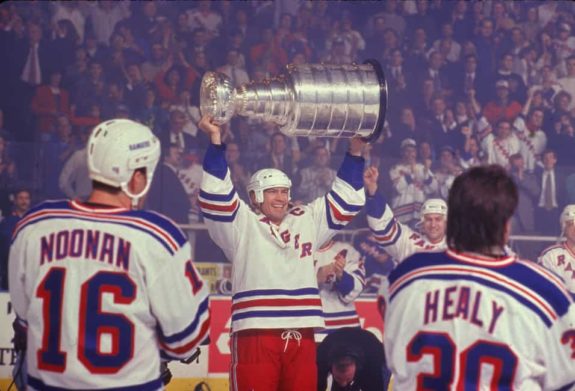
Ultimately, 1991-92 was about the critical pieces of a championship team starting to come together, both through the development of young core players and trades for key veterans who would play big roles two seasons later. Yet that formidable team could have also made the season mean so much more – perhaps altering the course of history and making the spring of 1992, and not 1994, the unforgettable season of their lives for a generation of Rangers fans.
Would the faithful trade in memories of Messier’s hat trick in Game 6 against the Devils in the 1994 Eastern Conference Final and the seven-game rollercoasters of that series and the Cup Final against the Vancouver Canucks, in order to have ended the drought two years earlier? Not very likely. What is certain, though, is that the 1991-92 team had a real chance to do just that – and should be remembered fondly because of it.